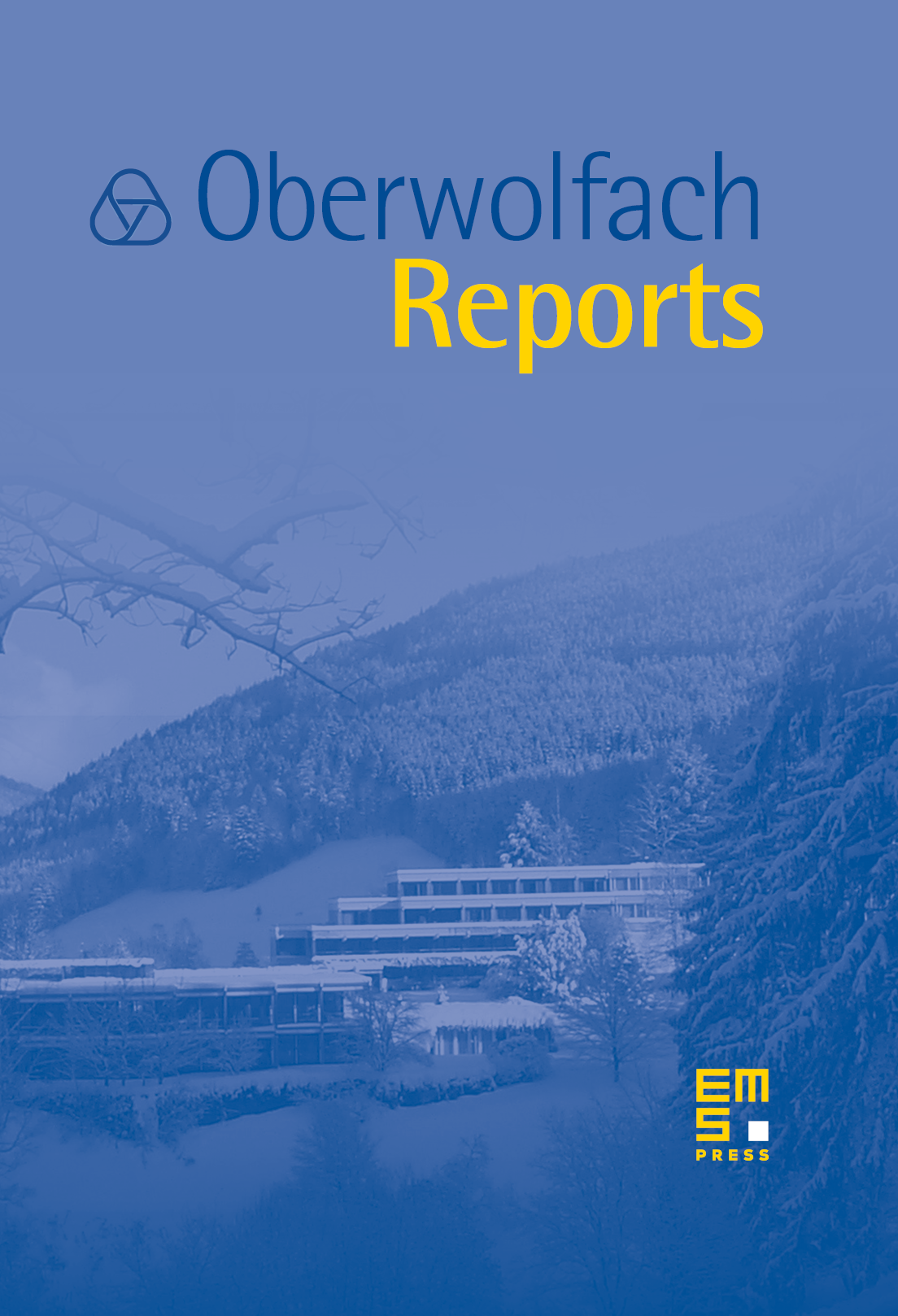Buildings: Interactions with Algebra and Geometry
Linus Kramer
Universität Münster, GermanyBernhard Mühlherr
Universität Gießen, Giessen, GermanyPeter Schneider
Universität Münster, Germany

Abstract
The focus of the conference was on buildings and their applications. Buildings are combinatorial structures (metric cell complexes) which may be viewed as simultaneous generalizations of trees and projective spaces. There is a rich class of groups acting on buildings; the action can often be used to obtain structural results about the group itself. On the other hand, buildings and related metric spaces – such as Riemannian symmetric spaces, -adic symmetric spaces, metric -complexes – form an interesting class of geometric structures with a high degree of symmetry. In the last years, there were several new developments in the applications of buildings in arithmetic geometry, Riemannian geometry, representation theory, and geometric group theory. The workshop brought together experts from these areas whose work is related to buildings. This mixture worked out quite well and led to many discussions and interactions between people coming from different areas.
A somewhat similar workshop Buildings and Curvature took place in 2004 in Oberwolfach. Then, the focus was more on Riemannian and metric geometry. The present workshop Buildings: Interactions with Algebra and Geometry took a more algebraic turn. There were 50 participants and 25 lectures. We had a substantial group of young participants, some of which could present their work at the conference. Both the young and the senior speakers succeeded remarkably well in presenting their work in a way which was accessible to people working in neighboring, but different areas.
There were several talks reporting on essential progress in abstract building theory: R. Weiss presented his revision of the classification for locally finite affine buildings and A. Thuillier reported on a new approach to compactifications of Bruhat–Tits buildings and Berkovich spaces. For spherical buildings, C. Parker presented recent results on convex subsets, and K. Brown on displacement lengths of automorphisms in non-spherical buildings. However, most of the talks concerned applications in various areas. P. Littelmann gave a survey on applications of buildings in representation theory of algebraic groups. The talks by B. Rémy and G. Willis underlined the increasing importance of locally finite buildings in the new structure theory of locally compact totally disconnected groups. There were talks on constructions of lattices using buildings by A. Thomas and R. Gramlich. K.-U. Bux and K. Wortman presented strong and recent results on finiteness properties of arithmetic groups. U. Görtz reported on affine Deligne–Lusztig varieties and the reduction of Shimura varieties, which leads to interesting (and hard) combinatorial questions about folded galleries.
The organizers had the clear impression that the workshop worked very well, that it led to new scientific collaboration, to new ideas and that it brought new geometric insights. We would like to thank the institute and its friendly and helpful staff. The additional support by the NSF for young researches from the US is gratefully acknowledged.
Cite this article
Linus Kramer, Bernhard Mühlherr, Peter Schneider, Buildings: Interactions with Algebra and Geometry. Oberwolfach Rep. 5 (2008), no. 1, pp. 119–172
DOI 10.4171/OWR/2008/03